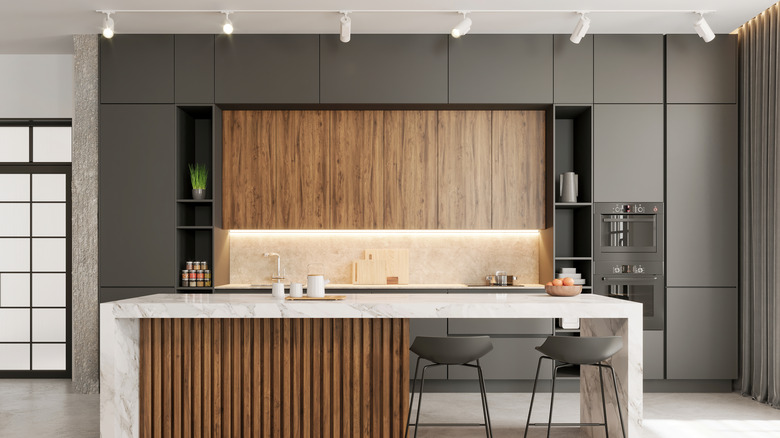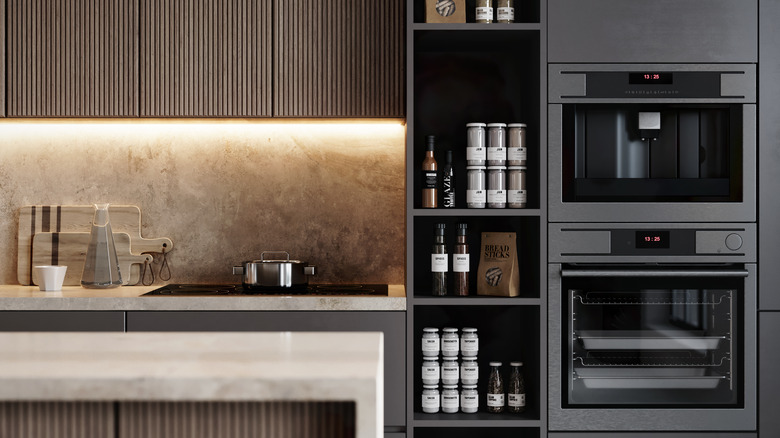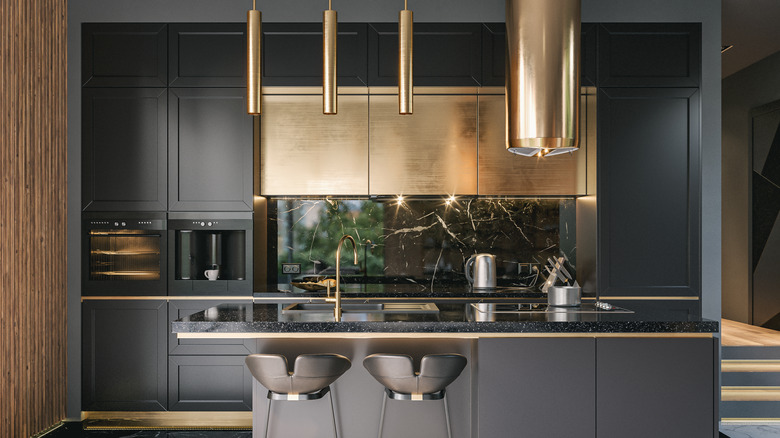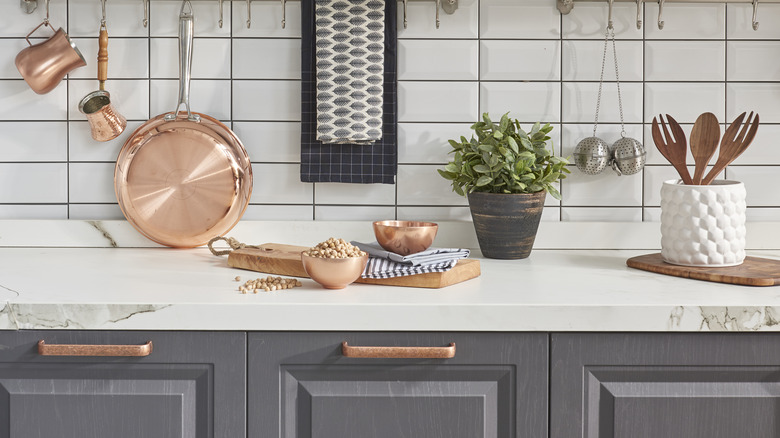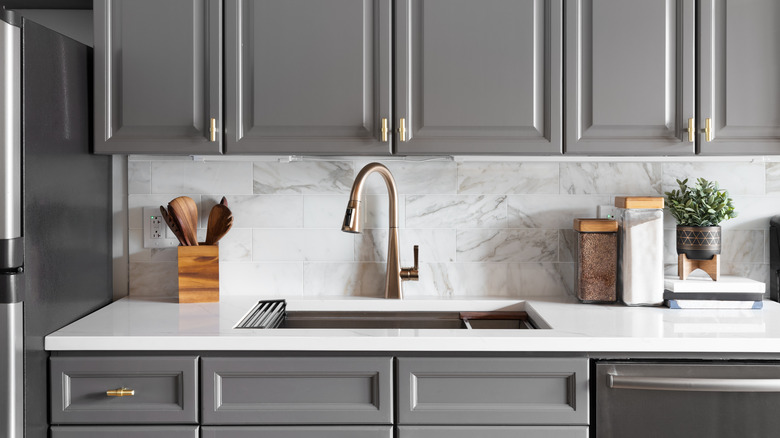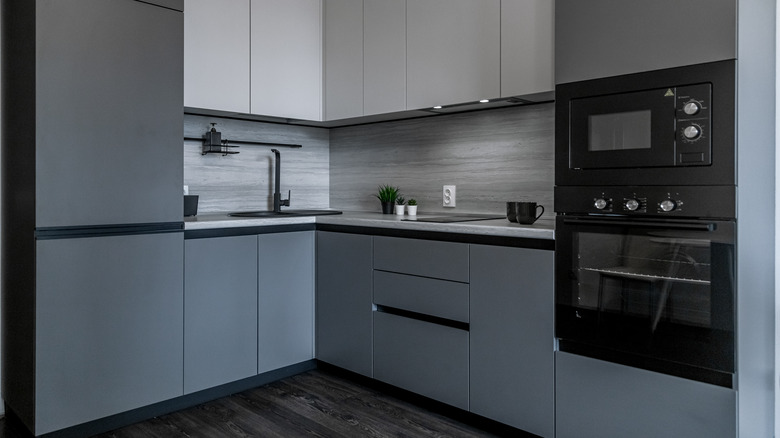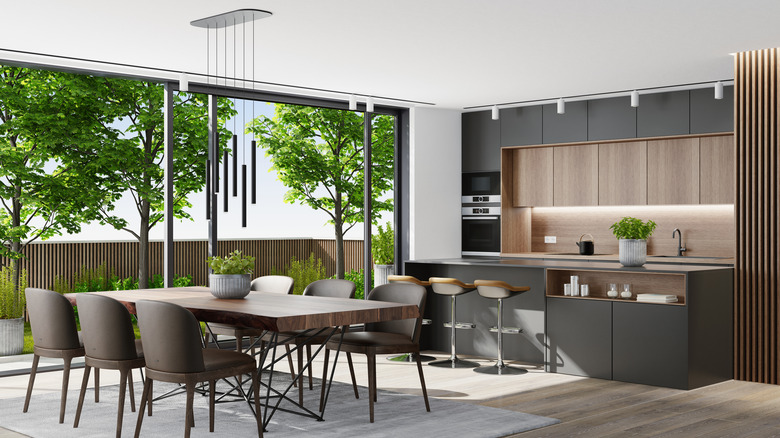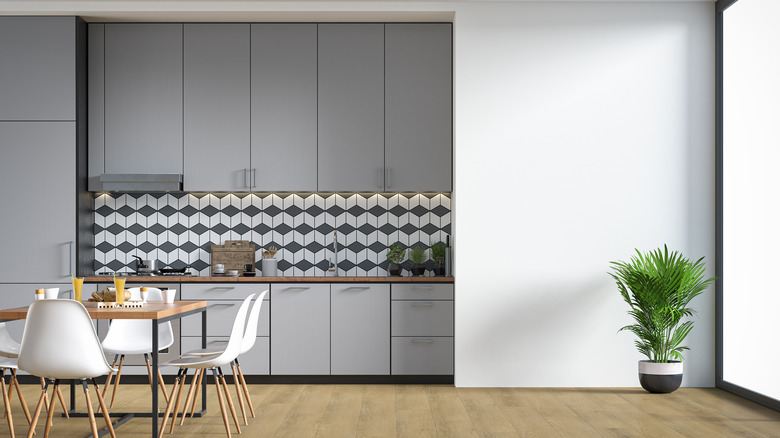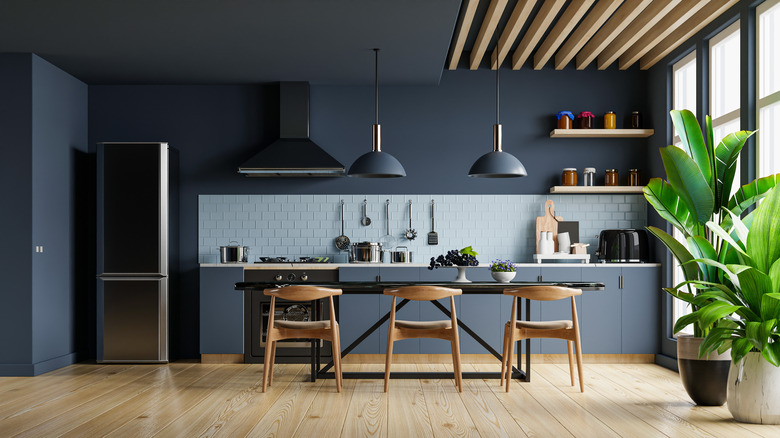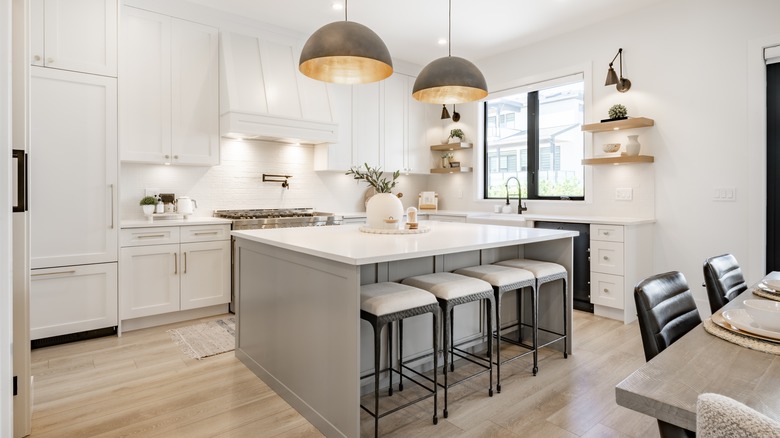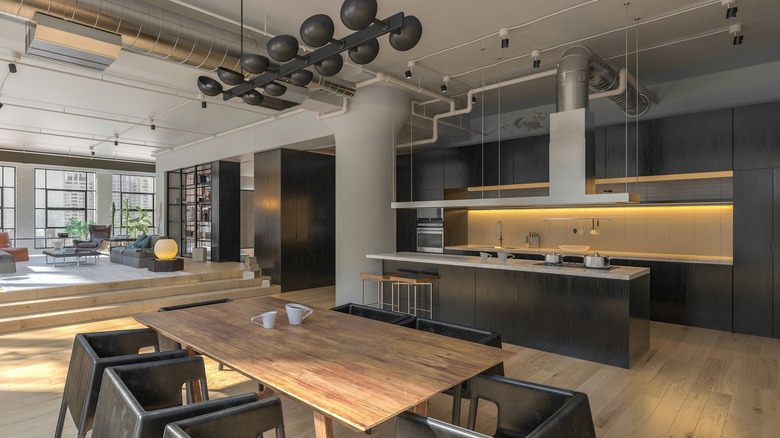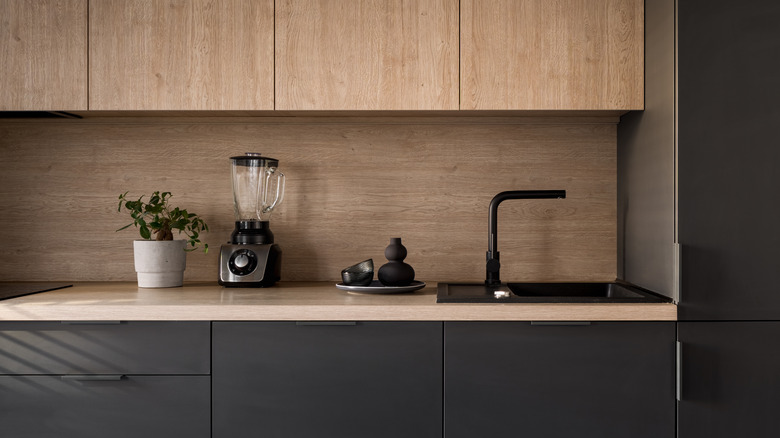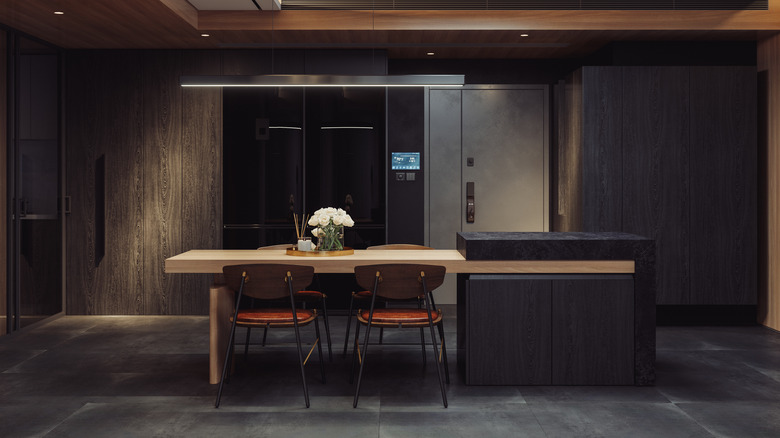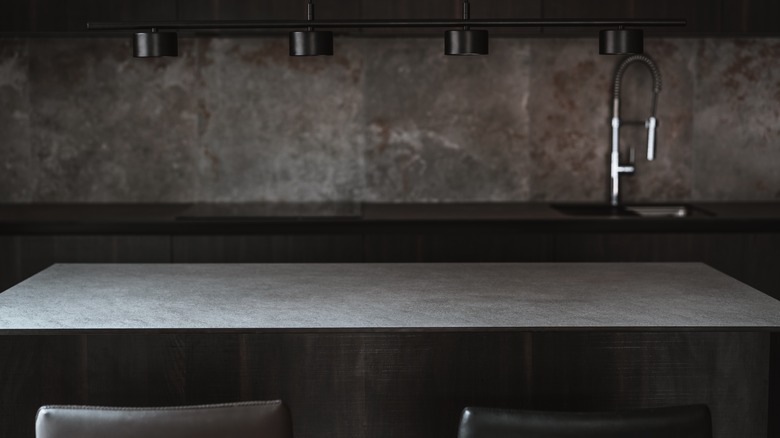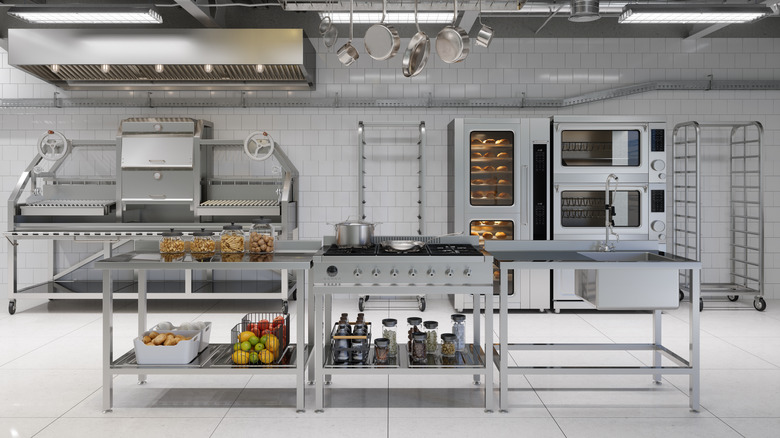Modern Gray Kitchen Ideas To Try In Your Space (& 3 To Avoid)
Though unwanted in the skies, gray has definitely found a place in people's kitchens today. This highly versatile shade has become a popular motif in recent years. Real estate experts attest that gray is an ideal color for kitchen cabinets, backsplash, walls, and other features. Being a neutral hue, it can easily complement other colors and material types and serve as a binding agent that will hold other elements together. However, proper balance is also necessary, as its wrong application can spoil your design.
Gray has a reputation for being dull and lifeless. However, there are a multitude of ways to utilize this color to create visually stunning home kitchens. All you need is to know the design strategies that can emphasize the often unrecognized beauty of this timeless hue — more importantly, how it can bring out the character of other features of the room. Listed here are the techniques that design pros rely on to create the most impressive gray-themed kitchens. Moreover, included are possible pitfalls to steer clear of.
You cannot go wrong with gray and wood elements
Just like gray hue, wood is another universal design component. However, the two make a perfect pair nonetheless. The organic identity of wood surfaces adds life and warmth to the cool, emotionless aura of gray. "Incorporating warmer tones through natural materials like wood flooring or an oversized rug balances out the cooler tones from the gray and creates a cohesive design scheme," explains UK designer Lee Broom in an interview with Homes and Gardens.
Flat panels with a mix of matte gray and wood finish are a popular choice for kitchen cabinets, creating a dramatic look. For a brighter, more rustic style, you can go for light gray cabinets together with butcher block countertops and shelves. Be cautious not to choose a wood type or a gray paint type that is too close in appearance to its counterpart. Otherwise, they will fail to establish contrast. Feel free to add another neutral coat, like white or another shade of gray, to build more variation.
Insert touches of gold with gray for a luxurious appeal
Applied strategically, gray is a color that can make a kitchen look luxurious. However, you can enhance this further by adding a gentle dose of gold finishes. The two work together perfectly since the neutral state of gray serves as a backdrop for the bolder gold. In an interview with Mansion Global, Melissa Cooley, senior designer for Case Architects & Remodelers, explains, "Deep cool grays, emerald, black, cobalt, and deep reds all complement and add contrast to a brass or gold finish."
If you use gray for your cabinets and backsplash, then a dash of gold for your cabinet hardware, plumbing fixtures, or appliances will go gorgeously with it. The lavish metal finish will resemble jewelry, decorating a fancy outfit. Just make sure not to overdo it, as too much shine can overwhelm the look of the room. To be more subtle, you can go for gold with a low luster or opt for brass fixtures instead.
Is gold too shiny? Try pairing gray with copper
Copper is becoming a popular accent material for kitchens. Dubbed by some as "the new black," this historical metal material is beloved by many for its warm, nostalgic hue that is distinct from other metals. When mixed with the more modern, sophisticated gray, the elements marry two different worlds in a stunning contrast. "Mixing eclectic and collected, old and new, vintage and modern gives a home depth and a history," says Nashville-based interior designer Beth Haley during her interview with Style Blue Print. HGTV star Joanna Gaines uses copper in her designs as well.
Because it has less sheen, copper can be used more generously than its shinier counterparts. The material can be used for plumbing fixtures and countertops, backsplash, and hoods. Apart from its aesthetic use, copper is also valued for its antimicrobial properties. The deep rustic color of this copper blends beautifully with darker shades of gray, creating a handsome contemporary look. For instance, try pairing gray stone countertops or backsplash with copper faucets.
Combining gray and white works well
Two neutral colors together? You bet. If you choose the right shade, white and gray, look great together. Randi Baldwin, co-founder of Relaxing Decor, shares how he uses this combination in his designs during an interview with realhomes.com. "When using charcoal gray, my top recommendation is to use plenty of white in the space," says the interior designer. "This contrast will help brighten it up and prevent your space from feeling too dark."
Mixing gentle gray surfaces is a winning alternative to an all-white motif. A palette of light gray and white is also excellent for small kitchens. This blend of shades can create a bright atmosphere and is one of the easiest ways to make your kitchen appear bigger. Try using a rhino or stone gray for your lower cabinets and chalk white for your overhead cabinets. You can also apply the variation with the flooring, counters, and backsplash.
The cooler side of gray deserves more attention
Did you know that gray has two faces? That is right. If you examine it closer, this neutral color is not always as neutral as we think. "There are warm grays (yellow-based) and cool grays (blue-based)," explains color expert Karen Haller in an interview with The Design Sheppard. The former, which is also called the "greige" color variety, is more popular nowadays. However, the latter is by no means less commendable and can definitely lead to a fabulous-looking kitchen.
Cool grays exude a more contemporary charm and go well with deep, elegant colors such as navy blue and sage green. "If you are a lover of sleek and contemporary frameless flat panel design, you might opt for more cool grays in your color selection," recommends New York-based designer Julie Schuster on her blog. One thing to note is that you should not mix cool and warm tones. This can create a confusing visual composition in the room.
Bring in the greenery to invigorate shades of gray
Some people may think that gray kitchens feel stale and lifeless. That does not have to be the case, and one way to prove them wrong is by decorating the room with lush indoor plants. Inserting pops of vibrancy into a space is a visual treat. Plus, the greenery will stand out in front of a gray background, further emphasizing their natural charm. Indoor gardens bring more than just aesthetics. Plants clean the air in your house and help create a sense of peace and calm for its occupants.
There are tons of ways to decorate your home using plants. You can place them on open shelves, counters, or window sills, or hang them on your walls. If you will use a dark gray shade, then it is best to avoid foliage that has deep green colors, such as snake plants, ZZ plants, and alocasias. These might get shrouded by the shady background and appear less lively.
Add character to gray hues using texture or pattern
Unlike bold colors, you may think gray is not as fun or interesting. However, what it does lack in pigment, it more than makes up for in terms of character. There are various materials and techniques that showcase gray in fascinating textures and patterns. You can blend these with clean or flat finishes to produce an orchestrated mix of surface styles. Because of its flexibility, you have much freedom to play with different combinations.
For instance, you can use patterned or large-format stone tiles for the backsplash. Gray-stained wood is also a wonderful option for cabinets or flooring. Numerous cut stones are also available in captivating natural gray shades. One such example is soapstone, a countertop material that has become very popular recently. Raw concrete is also a trending finish nowadays, particularly in contemporary and brutalist-style homes. You do not have to limit yourself to fixtures or structural materials; throwing in a rug or strategically placing some decor can also nail the effect you are going for.
Gray and blue combinations equal sheer elegance
When mixed together, gray and blue produce a visual chemistry that emanates calmness, tranquility, and class. It is no wonder that many designers and homeowners favor blue as a partner for gray. In fact, this color combination reigned as the top choice for contrasting kitchen island cabinets in the Houzz Kitchen Trends Study back in 2020. According to experts, blue has a certain warmth that is often overlooked since it is prevalently perceived as a cool color. However, pairing it with the more frigid gray effectively brings it out. "Navy blue works to warm up gray and creates an elegant and sophisticated look," explains interior designer and consultant Aaron Styles in an interview with realhomes.com.
We have also seen celebrity designers pull off this color pairing in their projects. In one kitchen renovation, Jenny Marrs of HGTV's Fixer to Fabulous used a charming blue-gray coat for her cabinets with gray tiles for the backsplash. Try finding a blue hue that you like and then choosing a gray counterpart to go with it. However, do not limit yourself to paints. You can also use gray tiles, wood, or stone.
The farmhouse style looks great with gray
Gray might sound too sophisticated or too contemporary to conform to more rustic styles. However, as a neutral color, it can complement almost any theme or motif. And yes, it looks amazing in a farmhouse kitchen, a design concept that is very hot right now. If you are a fan of HGTV, some of the best kitchen makeovers by Lyndsay and Leslie Lamb from the show "Unsellable Houses" incorporated modern farmhouse and country styles. They cleverly blended gray shades into their designs.
The farmhouse theme is known for its bright appearance. Therefore, to pull off a rustic-looking gray kitchen, it is advisable to stick with the color's lighter varieties, especially if you intend to use it for the cabinets. Alternatively, you can insert surfaces coated in white, like the countertop, backsplash, or an apron-type sink. Mixing in rich wood elements will also help achieve the look.
Industrial kitchen designs feel authentic with a gray palette
As we mentioned earlier, gray goes well with a wide variety of styles. However, the industrial look is one of its best friends. This particular design concept aims to depict the appearance of old warehouses with their paintless concrete surfaces, exposed bricks, and steel beams and columns. Therefore, the best color palette for an industrial home decor style comprises neutral shades, including gray, black, white, and brown.
"They (warehouses) weren't meant to be overly decorated and extravagant," states designer Ula Burgiel while explaining about industrial interior design on her website. "I think a simple black and white or neutral color palette is the best pick for the industrial-looking properties." The London-based interior designer recommends a combination of rough wood, polished concrete, and metal items to create an industrial minimalist kitchen. Remember, however, that attaining this style is not dependent on having plenty of gray elements. Do not be afraid to add touches of other colors and textures.
Modern minimalist reigns with a gray palette
Unlike stronger pigments that tend to be loud, gray finds a place in minimalist interiors thanks to its inconspicuous nature that resonates with the less-is-more principle. Interior designer Sharon Blaustein explains it in detail in an interview with Elle Decor, "Minimalism for me is about keeping a space simple, uncluttered and accentuating the attractive architectural features of a space. The palette is mostly monochromatic and color is used as an accent."
Are you planning to install flat-panel cabinets? Why not go for a matte-gray color? You can do different shades for the upper and lower or create variations using white or wood. Adding a stone countertop or backsplash will enhance the look, giving it a handsome, high-end appeal. To keep the minimalist identity, make sure not to put too many details and variations of color and texture. Use no more than two shades of gray for best results.
Going too dark can make a gray kitchen feel dirty
It could be tempting to tap the dramatic side of gray and cover your kitchen with its darker shades. However, if you are planning to resell your property at some point, you may want to think twice about using this motif. Dark kitchens can turn off potential buyers, according to real estate experts. You can still use dark gray by pairing it with white or other neutral colors to lighten the palette.
Another concern with deep, shadowy gray is that it may have negative psychological effects. "The kitchen is a space where cleanliness is paramount, and these (dark brown and dark gray) colors are synonymous with dirt and a lack of sterility," says color psychologist Lee Chambers in an interview with Ideal Home. The key, therefore, is not to let the shade overpower the room but to devise strategic combinations to keep things in moderation. Abundant lighting, both natural and artificial, will also be vital.
Monotone gray kitchens are not for everyone
A gray environment with little contrast in terms of color and materials can be overwhelming. Although some designers intentionally create daring monotone kitchens, they only appeal to certain owners. "Using just one shade of gray can make your room feel flat and dull," explains interior designer KD Reid in an interview with mydomaine.com. To maintain visual interest in the room, he recommends using layering techniques, such as adding different textures.
Sticking to a single gray shade is entirely your choice. But if you intend to do it for a client, make sure they are on board with the idea. After all, there are tons of ways to design a beautiful monochromatic kitchen. You can always create variations following the suggestions discussed above, such as adding wood, metal pieces, and plants. You can insert patterned facets, too, with tiles, panels, or even rugs. Playing with dimensional surfaces is also worth exploring. You can use different tones for the flooring, walls, and ceilings.
Stainless steel kitchens are best in commercial spaces
As a kitchen material, stainless steel has a lot of practical benefits. It is robust, hygienic, and has unparalleled heat resistance. However, there are also downsides to using stainless steel countertops and cabinets. In addition to their noisy and dent-prone surfaces, their installation is very expensive. Moreover, the metallic look lacks the homey character. Its association with laboratories and cafeterias can make people uncomfortable or stressed.
While stainless steel kitchens are perfect for restaurants and hotels, these silver-gray luxuries are not necessarily ideal in a residential setting. If you want to go gray, stainless may not be the best way to do it. Still, there are clever ways to incorporate this unconventional material into your home kitchen. For instance, you can opt for stainless appliances, sinks, range hoods, lighting fixtures, or even your island. Go for a satin or hairline finish instead of the polished types. Stainless steel also works perfectly in some loft-style designs.
